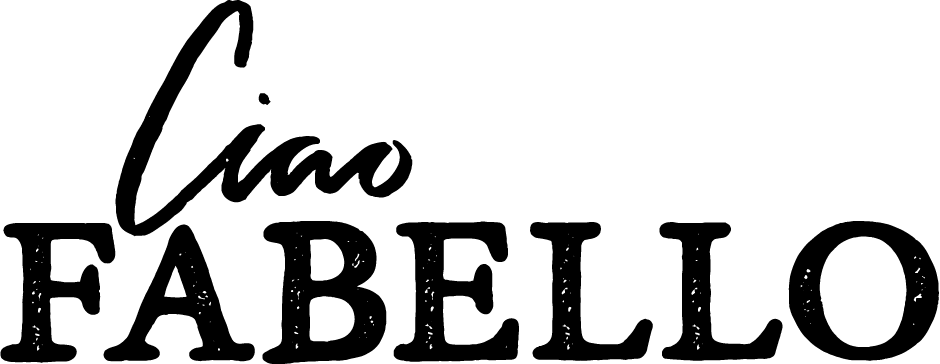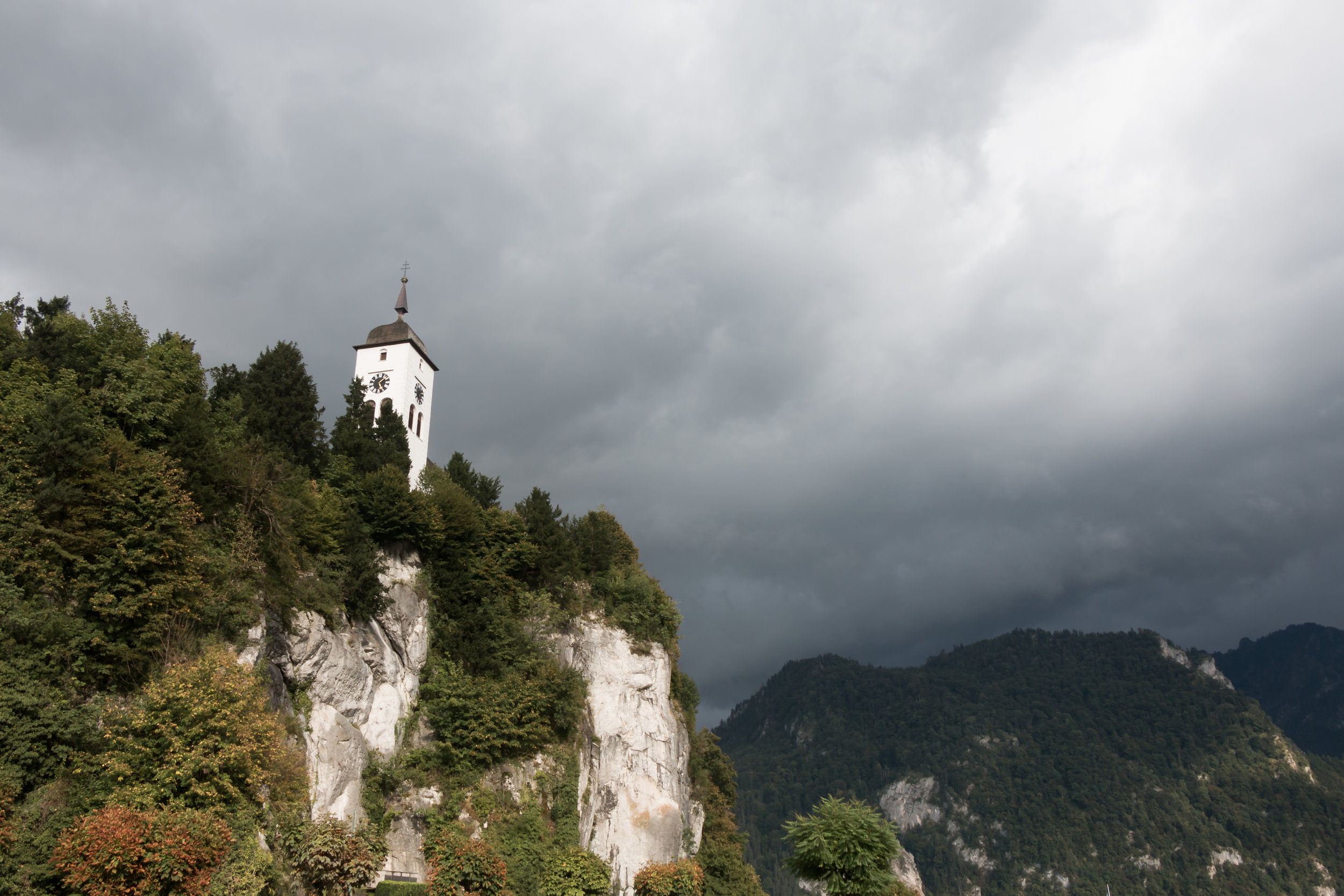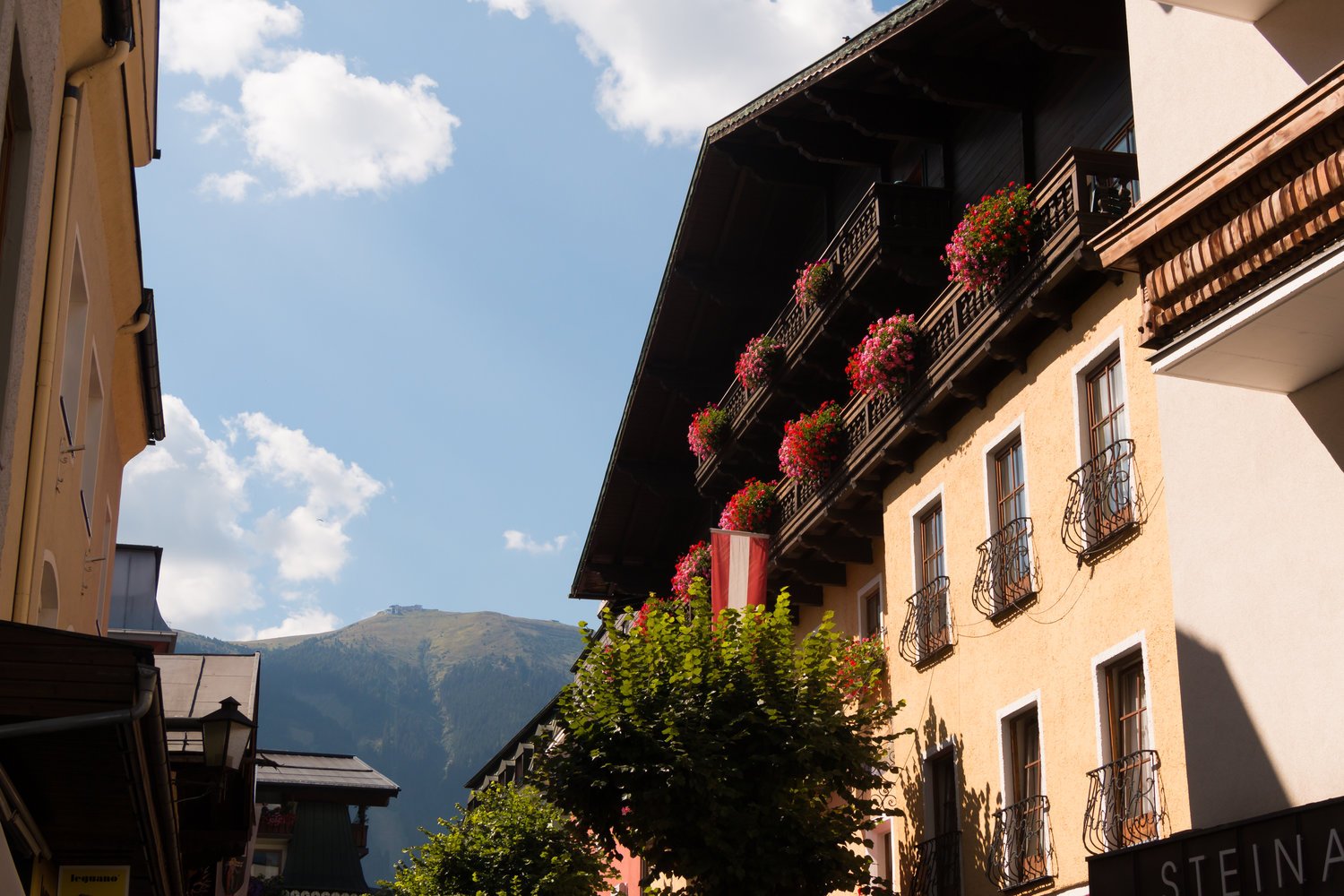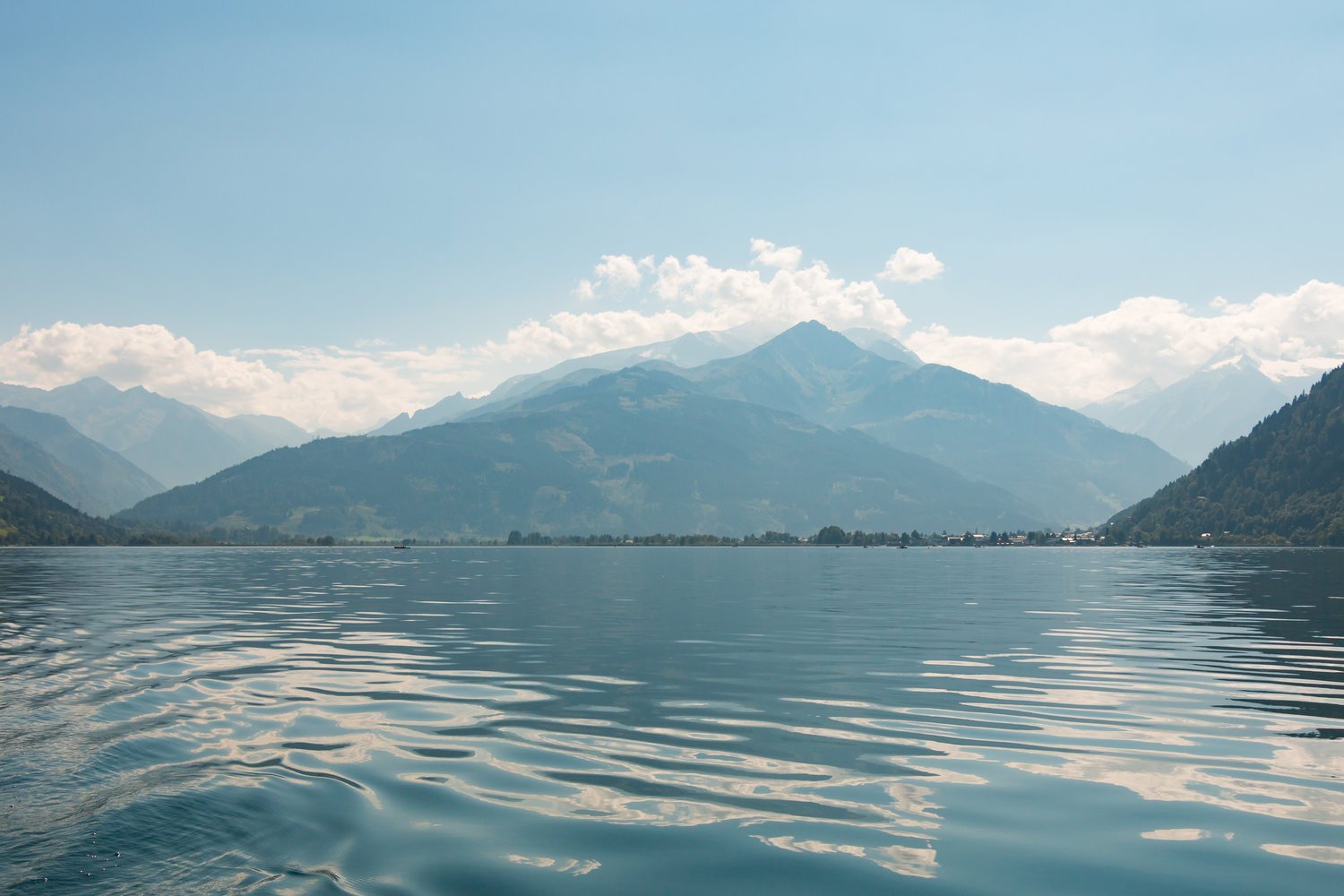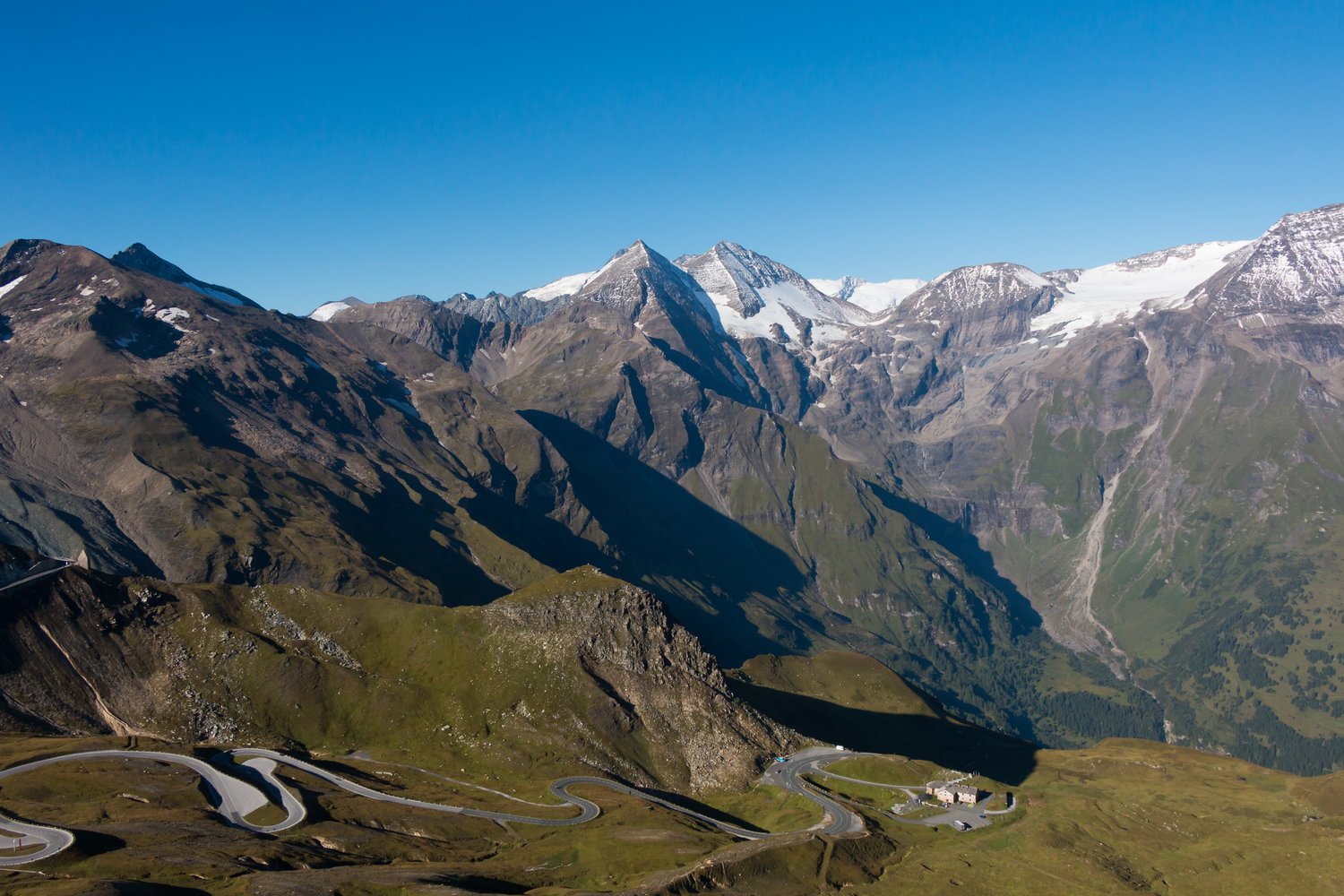The Alps, Austria & Germany
Our New Year’s 2016 long weekend to Salzburg infected us with an Alpine strain of wanderlust. It only took until September for us to scratch the Alpine itch, when we boarded a flight from London to Munich for a week in the mountains. From Munich, we drove a couple of hours to Salzburg, where we spent four nights, before venturing deeper into the Alps (Zell am See) for two nights and crossing the border (but just barely) to Mittenwald in Germany for our last two nights. Salzburg was such a magical place in winter (we even witnessed snow!) and we wondered if we would still feel the same in the summer…
Salzburg
We stayed in the same hotel as we did in January (Altstadthotel Kasererbraeu), but this time we got a free upgrade to a suite! Our trip was starting off right. Since we already did a lot of the obvious things in our previous trip, we had the freedom to explore different corners of the city this time around. Just walking around the Old Town is a pleasure, especially when away from the crowds along the main drag near Mozart’s birth house. The river is especially calming in the summer. We walked up to Monchsberg for views of the city at sunset, and they are stunning (especially since, unlike the views from the castle, these views have the castle in them!). The city is indeed as magical in the summer as it is in winter, especially when bathed in the golden light of a late summer’s evening.
Petersfriedhof, the cemetery at St. Peter’s, is another sight we missed last time, but it’s easily one of the most calming places in the city. We left the Old Town for the Mirabell Palace Gardens one of the mornings, and though it was beautiful, I can only imagine how vibrant it in the spring. Look for the view down one of the major pathways directly to the cathedral and castle (47.805742, 13.041166).
Hallstatt
Hallstatt is the gem of the Salzkammergut and Rico has wanted to take Brittany here since he visited with his family in 2011. The town had been talked up for its surreal setting and calming pace of life for so many years that we weren’t sure if it could ever meet the expectations we had set for it. But, even with sky-high expectation, it blew us away. Hallstatt is not a secret—immense crowds of people flock here and overflow the small village, so it’s best to get here early in the morning. Our first order of business was to rent a little electric boat and take it for a spin around Hallstatter See. Renting boats on lakes became a staple of this trip—it’s such a fun way to see a place from a different perspective.
Once back in town, we wandered to Marktplatz, the fairytale center, before poking our heads in the Lutheran church right on the water. Lesser visited but very much worth is Maria am Berg, the Catholic church up in the hills. The visit up is worth it not only for the church, but also for the captivatingly beautiful cemetery and the views of the town and lake.
Not far from Salzburg is the mountain peak of Dachstein, accessible via a two-stage cable car ride. Though the ride is expensive, it’s worth it. There are a variety of viewing platforms at the top and a little hiking loop with views of a glacier on one side and of Hallstatter See and the mountains around it on the other. You can even lay down in one of the many funky chairs to relax and appreciate the views!
Traunsee
Traunsee is another one of the lakes in this district. We had originally planned to visit the town of Ebensee, but it didn’t look worthy of a stop, so we just winged it. While we were aimlessly driving up the western shore of the lake, we could see a majestic castle seemingly floating on the water in the distance. Intrigued, we continued on. Schloss Ort is indeed something out a fairy tale. The castle, first built in the 11th century and passed around the hands of royalty and emperors ever since, is set on a small island connected to the shore with an attractive wooden pedestrian bridge.
Britt spotted Traunkirchen on our drive to Schloss Ort and we decided to head back in that direction. It started to drizzle at this point, but we couldn’t be deterred! The town is a tiny one, but it has a jagged hill or rock upon which sits a little church. We climbed up the hill to the church and sheltered ourselves from the rain while we waited for it to subside. Once it cleared up a bit, we walked back down the other side and walked through the church and cemetery at Maria Kronung.
We made a quick stop at Fuschlsee in search of a classic wooden-pier-disappearing-into-beautiful-lake photo we had seen many times. We don’t think we found exactly what we were looking for, but we found a fine substitute at the Schloss Fusch resort.
Wolfgangsee
Wolfgangsee was our final lake. We stopped in St. Wolfgang, primarily for its cog railway train ride up to the top of Schafberg. We did take the ride, but on this cloudy day the visibility at the top was virtually zero. Oh well! Back at sea level, we did enjoy checking out Pfarrkirche St. Wolfgang and walking around the center of the town. We drove around the lake to St. Gilgen, which didn’t have nearly as much to do or see, but was still a worthwhile stop. Noteworthy sights were the church and cemetery at Heiliger Agidius and the unbelievably cute rathaus (town hall).
As far as food is concerned, we were set. Rico admittedly had too many Wiener schnitzels (is there such a thing?) and fell in love with the local drink Spezi (half Coke and half orange soda—enchantingly delicious!). We made it a habit, just as we did in January, to start each day Cafe Tomaselli (sausage and eggs and kipferl brioche). Dinner in Salzburg was had at Gasthof Goldgasse (best-ever Wiener schnitzel, fried chicken, potato hash), Trattoria Domani (spicy salami pizza), and Zirkelwirt (Wiener schnitzel and spatzle with onions). We also made time for dessert at St. Peter Stiftskeller (lavender crème brulee and cheese strudel), Cafe Tomaselli (cream and cranberry cake; hazelnut, almond and cinnamon cake; cheesecake; and tiramisu), and Gasthof Goldgasse (the local speciality, Salzburger Nockerl—don’t attempt to eat this thing on your own!). Offset the sweetness of dessert with pretzels from one of the many bakeries around. Other noteworthy meals included lake-side lunch at Seehotel Gruner Baum in Hallstatt (Wiener schnitzel and tomato and basil pasta) and lunch at quirky Kaffeewerkstatt in St. Wolfgang (Nutella and banana waffles for Rico and raspberry and ice cream waffles for Britt).
We packed a lot into our four days of the trip but still had so much left to do and see! Stay tuned for adventures and explorations from the glitzy Austrian town of Zell am See.
Eagle’s Nest
Before arriving at our second home base of the trip after leaving Salzburg, we stopped off in the mountainous southeastern corner of Germany that juts out into Austria. Eagle’s Nest (Kehlsteinhaus in German), originally built as a retreat for Adolf Hitler, is now a tourism complex and restaurant set over a mile high atop one of Hoher Goll’s sub-peaks on the edge of the Alps. Private vehicles are not allowed on the road to the top, so we parked the car bought a ticket for a ride on the efficient bus system. It gets very busy here, so plan accordingly and try your best to do this early in the morning. As if the views from the bus ride aren’t enough, the panoramic sights at the top are jaw-dropping. We took a seat up by some of the hiking paths and took in the direct line of sight to Salzburg’s castle (you really have to strain your eyes to see it!) on one side and to the majestic Konigssee on the other. After exploring some of the hiking paths and grabbing a quick lunch at the outdoor restaurant, we took the zig-zagging walking path down to the bus stop. Most people will take the elevator the 400-foot vertical distance from the bus stop and the top, which is fair on the way up, but the views (and lack of crowds) from the path are well worth the walk down!
Konigssee
It was not in our original plans to visit Konigssee, but it just looked so good from Eagle’s Nest and is only a 20-minute drive away. We walked up the main drag of the town named after the lake (or was the lake named after the town!?), which is set on the northernmost cove. It’s a very touristy place, but also very charming in a kitschy way. We rented a rowboat and set off into one of the most spectacularly beautiful settings we’ve ever seen. There was something magical about this place, especially with the mid-afternoon sun casting a warm glow to the deep green waters. We rowed as far as we could, which afforded us a very faint view of St. Bartholomew’s Church, and then made our way back, taking many photos throughout. We recharged with some gelato by the water and then got back in the car with our sights set on our final destination of the day.
Zell am See
Zell am See, a glitzy Alpine town set along the Zeller See deep in the Alps, was our home base for the next two nights. Our room in the Seehof Hotel was basic but comfortable (certainly a downgrade after our surprise suite upgrade in Salzburg!) and offered balcony views to the lake (and also to the annoyingly loud trains that run right through the lakefront of the town). Kirchgasse, the main drag by the lake, and the side streets shooting off of it are a pleasure to stroll, and Stadtplatz, the town center, is a pretty little square perfect for people watching. The church nearby (Heiliger Hippolyt) is worth a visit as well. We also enjoying walking the Esplanade right along the lakefront and through Elisabeth Park on our first evening. Keeping with the boat-on-a-lake theme of our trip, we rented a little electric boat from a kiosk in Stadtpark and took it for a spin!
We took a break from Austrian and German food while in Zell am See, enjoying chicken wok and spaghetti carbonara from Brasserie Traube, salami pizza from Pizzeria Giuseppe, and coconut vegetable curry and shrimp avocado from Hotel Seehof’s restaurant (Rico still drank Spezi every chance he could though!).
If you’re visiting Zell am See and have a car, driving the Grossglockner High Alpine Road is a must. The 35€ toll is a steep price to pay, but it’s worth it. We drove from the northern entrance near Zell am See down to the roundabout at 47.062927, 12.817729 and westward to the Kaiser-Franz-Josef-Haus, where you can appreciate Austria’ highest peak and its massive glacier from up close. The views were incredible and luckily there are plenty of areas to pull off the road and appreciate them. It probably took us 3 – 4 hours to do the drive from Zell am See to the Kaiser-Franz-Josef-Haus and back to Zell am See. Be sure to do this drive, as we did, early in the morning (check the official website for opening times, which change through the year) to avoid the crush of visitors in the late morning and early afternoon. Being stuck behind all that traffic makes the drive a lot less fun.
The next day we left Zell am See for the last leg of trip, just over the German border to the fairytale town of Mittenwald.
Innsbruck
From Zell am See we drove to our last home base of the trip, but not before stopping in Innsbruck, the capital of Austria’s state of Tyrol and host of the 1964 and 1976 Winter Olympics. The streets in the old town are a pleasure to stroll, especially when you get away from the tourist crush of Herzog-Friedrich-Strasse and can appreciate the quieter side of the city. The main street is crowned at its northern end by the Goldenes Dachl (“golden roof”), a mostly underwhelming landmark built in honor of the Holy Roman Emperor and Archduke of Austria Maximilian I’s marriage in the 16th century. Just 30 seconds from the roof is the Stadtturm, a 15th-century watchtower offering commanding views of the city and its mountainous environs from 100 feet above the ground. Seeing the city among the towering mountains from this viewpoint really puts the relative size of the city versus the immense Alps into perspective!
After a quick snack (delicious pretzels from Strudel Cafe Kröll), we headed for St. Jacob’s Cathedral. Unfortunately, we couldn’t visit as there was a service in progress, so we had to appreciate it from outside. The River Inn is just on the other side of Domplatz, so we walked along it for a bit. There’s a great view of a row of typical colorful houses from across the river with a beautiful backdrop of mountains at 47.268124, 11.390830. At this point our snack was wearing off, so we sat down at Gasthof Weisses Rössl for a more substantial meal of Wiener schnitzel and grilled sausage.
And with that, we left Innsbruck and traveled just barely across the border to the picturesque German town of Mittenwald, where we’d be spending the final two nights of our trip.
Mittenwald
In Mittenwald, we stayed at Hotel Rieger, which offers basic but comfortable rooms and is conveniently located in the center of the town. Our room even had a beautiful balcony view of the Alps in the north! Obermarkt, Mittenwald’s main drag, is about as quaint and typically Alpine as it gets. We wandered down the street in disbelief at the cutesy architecture and artful paintings adorning each building’s façade and wondered if this was a real place or something out of a theme park! The Church of St. Peter and Paul is at the northern head of the street and worth a quick visit. Though the main street is indeed a beauty, our favorite part of the town was just wandering the back streets. I think we must have walked on portions of every street in that town!
We had some good meals in Mittenwald as well: lunch at Ristorante Pizzeria Amalfi da Francesco (bruschetta and ham, salami and artichoke pizza), dinner at Das Marktrestaurant (Wiener schnitzel, beef ravioli, and chocolate tart with raspberry sorbet), and dinner on our final night at Restaurant Rieger, our hotel’s restaurant (Wiener schnitzel and a mixed vegetable plate).
Mittenwald also serves as a great base for some small and scenic hikes and walks. The first we did was the Leutaschklamm gorge, which you can either drive to and walk (mostly downhill) through the platform system high above the gorge (park at 47.427690, 11.234850 just over the border in Austria) or walk to from the center of Mittenwald (the walk is easy and takes under a half hour). We enjoyed the walk along the gorge from the car park, especially in the warm light of the early morning (we recommend doing this in the early to mid-morning to avoid the crowds). The climax of the walk along the gorge is a high metal bridge spanning the gorge and affording a view up back toward from where you walked, down to the rushing waters of the river, and also down to the end of the gorge in Germany. Once we were back in Mittenwald we also took the second route and walked to the gorge from the German side—the walk is pleasant, set beside a calm river and along beautiful farm land with mountains reaching high into the sky in the background. The best part of approaching from this side was how easy it was to see the waterfall at the end of the gorge. You have to pay a small fee, but it’s worth it!
We also hiked to a small lake from the center of Mittenwald. Lautersee is only a 45-minute hike from the center of Mittenwald and offers stunning scenery, swimming, and even food and drink served from restaurants and hotels on the northern edge of the lake. There are a few different ways to get there, but we took the path starting at 47.442728, 11.256041, which begins with lots of steep switch backs but then levels out and slopes down toward the lake. The first landmark you’ll see which signals that you’ve arrived is a charming and photogenic chapel to the northeast of the lake. We walked around the lake, dipped our feet in, and hung out with the goats on the northwest hill above the lake which were stereotypically adorned with bells around their necks.
Neuschwanstein
We left Mittenwald on our final day, but our flight was not until later in the afternoon, so we had time for one more stop. Neuschwanstein is one of Germany’s most famous castles, and we weren’t far from it, so off we went! We walked up the hill to Marienbrucke, the bridge offering the typical view of the castle. The bridge had been closed and under construction for months leading up to our trip, but it finally opened up just in time for us to visit! We didn’t visit the castle itself, but honestly the best part is seeing it from the outside anyway. Once we were back down in Hohenschwangau, we grabbed lunch at Restaurant Alpenrose am See (pasta with tomato in a light cream sauce and apple strudel) and took one last boat ride, this time on a rowboat around Alpsee.
We fell in love with the Alps on our first visit to Salzburg in January 2016 and this summer visit cemented the mountain range deep within our hearts. The fresh air, amazing scenery, and heartwarming culture are what make the Alps such a potent travel destination and that certainly explains their popularity. And mark our words: this will not be our last time in the area!
